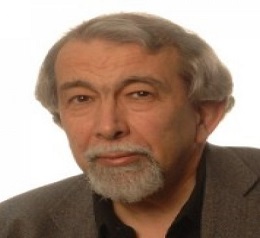Tom L Blundell
Cambridge University, UK
Title: Structural biology, bioinformatics and drug discovery: from cancer to bacterial infections and Covid-19
Biography
Tom Blundell is a Director of Research in the Department of Biochemistry, University of Cambridge, where he was between 1996 and 2009 Sir William Dunn Professor and Chair of School of Biological Sciences. He has previously held positions in the Universities of London, Sussex and Oxford.
Tom began his research career in Oxford, working with Nobel Laureate Dorothy Hodgkin on the first structure of a protein hormone, insulin. He has made major breakthroughs on the structural and computational biology and biophysics of hormones and growth factors (insulin, glucagon, NGF, HGF, FGF), receptor activation, signal transduction and DNA repair, important in cancer, tuberculosis and familial diseases. He has produced many widely used software packages for protein modelling and design, including Modeller (~12,500 citations) and Fugue (~1400 citations), and for predicting effects of mutations on protein stability and interactions (SDM & mCSM), to understand cancer & drug resistance. He has published ~650 research papers, including ~40 in Nature and Science, and has an H-factor of 119.
Tom has developed new approaches to structure-guided and fragment-based drug discovery. In 1999 he co-founded Astex Therapeutics, an oncology company that has several drugs in clinical trials and two on the market and that was sold in 2013 as Astex Pharma to Otsuka for $886 million. In parallel in the University of Cambridge he has developed structure-guided fragment-based approaches to drug discovery for difficult targets involving multiprotein systems and protein-protein interactions. He has also been targeting Mycobacterium tuberculosis proteins as part of the Gates HIT-TB consortia, M leprae for American Leprosy Mission and M. abscessus for Cystic Fibrosis Trust, including structural and biochemical studies of resistance mutations to first-line drugs.
Tom was a member of PM Margaret Thatcher’s Advisory Council on Science & Technology (1988-1990), Founding CEO of Biotechnology and Biological Sciences Research Council, 1991-1996 (Chair 2009-2015), Chairman, Royal Commission on Environment (1998-2005), Deputy Chair of Institute of Cancer Research 2008-2015 and President of UK Science Council, 2011- 2016.
Abstract
Knowledge derived
from genome sequences of humans and pathogens has the potential to accelerate
diagnosis, prognosis and cure of disease. We are moving quickly into an era of
precision medicine, not only in familial diseases where a mutation in a human
gene is important, but also for understanding somatic mutations in cancer. Equally important, the genome sequences of
pathogens, for example in tuberculosis, leprosy or SARS CoV-2, can give clues
about the choice of protein targets including those of existing drugs,
repurposing of others, and the design of new ones to combat the increasing
occurrence of drug resistance.
Structure-guided
approaches, both in academia and large pharma, have informed drug discovery for
five decades. More recently fragment-based screening structure guided techniques
have proved effective in lead discovery in Astex, a company I cofounded with
Harren Jhoti and Chris Abell. Applications have been not only for classical
enzyme targets such as protein kinases, but also for less “druggable” targets
such as protein-protein interfaces. Initial screening involves small fragments
with very low, often millimolar affinities, and biophysical methods including
X-ray crystallography are used to explore chemical space of potential ligands.
The approach involves a fast initial screening of a library of around 1000
compounds, followed by a validation step involving more rigorous use of related
methods to define three-dimensional structure, kinetics and thermodynamics of
fragment binding. The use of high throughput approaches does not end there, as
it becomes a rapid technique to guide the elaboration of the fragments into
larger molecular weight lead compounds. I will discuss progress in using these
approaches for targets in cancer and in mycobacteria tuberculosis, abscessus
and leprae and SARS CoV-2 infections. I will discuss the impact of the
Resolution Revolution in cryo-EM.
I will also
review our computational approaches using both statistical potentials (SDM) and
machine learning methods (mCSM) for understanding mechanisms of drug resistance.
We have demonstrated that resistance does not only arise from direct
interference of the resistance mutation to drug binding but can also result
allosteric mechanisms, often modifying target interactions with other proteins.
This has led to new ideas about repurposing and redesigning drugs.
 24-25 Mar 2021
24-25 Mar 2021  Webinar | Online | 11:00-17:00 GMT
Webinar | Online | 11:00-17:00 GMT 
